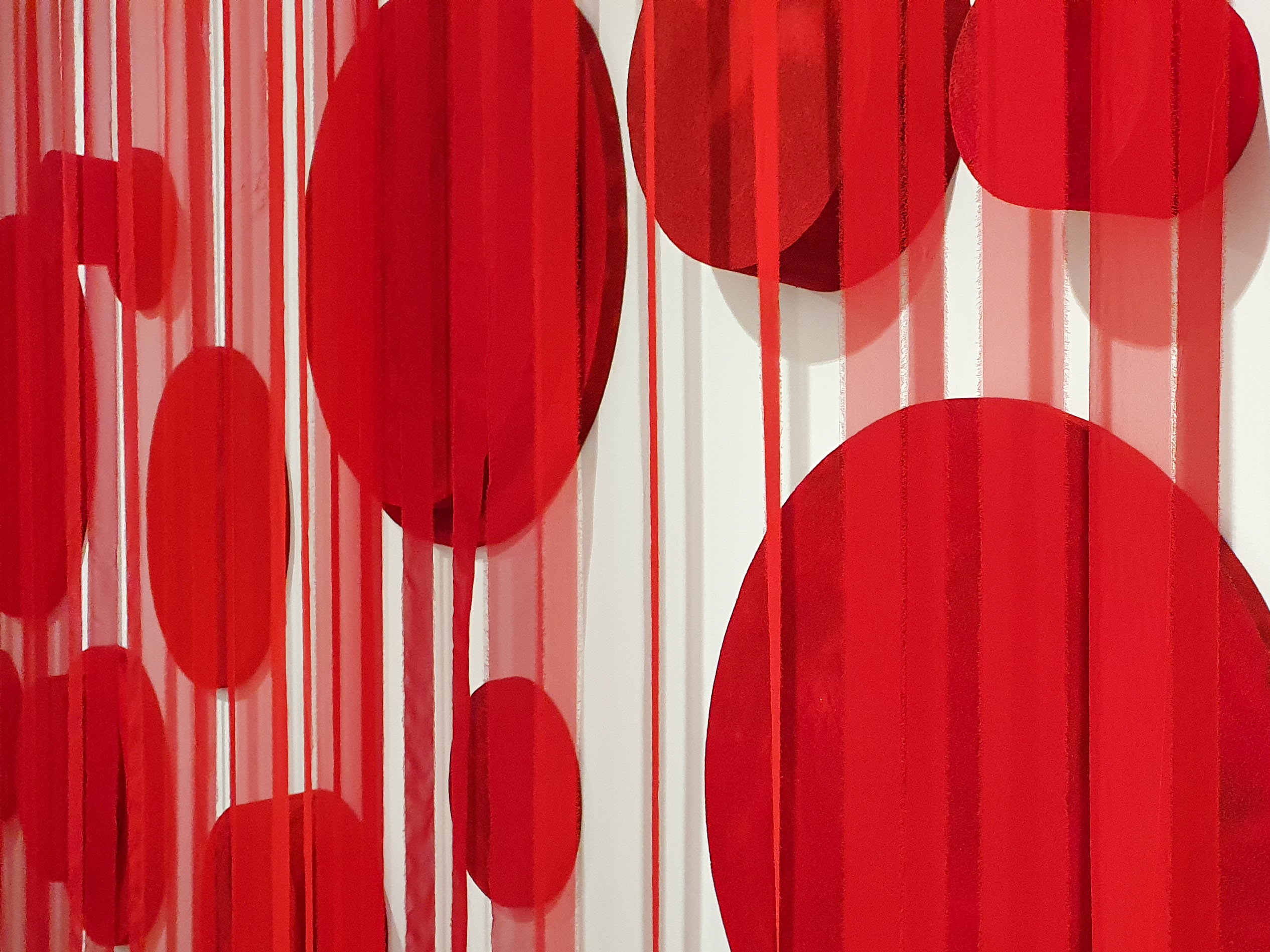History and heritage inspire creativity

‘La Mamma Dispersa’ is a large-scale installation that uses foam offcuts to create highly tactile artwork.
In summary
- Australian artists of Italian descent drew on 20th century design as they created the experimental exhibition Parallel Visions
- Swinburne tutor Anna Caione pulled apart Gaetano Pesce’s famous La Mamma Chair design as she created her artwork La Mamma Dispersa
- Parallel Visions looked at intersections between past and present, the patriarchal and matriarchal, and showed how connection to history can enrich creative practise.
Can a chair designed over 50 years ago inspire creative work today? Australian artist Anna Caione answers, ‘yes!’ with her artwork La Mamma Dispersa.
Along with five other contemporary creatives of Italian descent, Anna created the Parallel Visions exhibition as an exploration into how design history can enrich contemporary artmaking.
Their inspiration came from the work and creative practises of 20th century Italian designers.

Gaetano Pesce’s original ‘La Mamma’ chair design was inspired by experimenting with materials and Anna followed suit with her explorations in foam.
A desire to connect past to present
Anna and three fellow artists each selected a 20th century Italian designer and crafted creative responses to their work.
Associate Professor of Architectural History at Swinburne, Flavia Marcello, worked alongside them to create a virtual reality experience inspired by the 1930s Milan Triennale.
Even the exhibition’s display system was influenced by 20th century Italian design, resulting in a playful cross-pollination of design, art and history.
“It is about transforming design forms into non-functional artworks,” Anna said.
“It is that idea of twisting meaning and interpretation – disassembling a design object while exploring and manipulating its materials and forms.”

Cabinet of Curiosities – Artist, Sarina Lirosi, was inspired by Alessandro Mendin’s ’Quali Cose Siamo’ to explore forty objects that were intriguing, playful or which held an emotional connection
Drawing inspiration
Anna’s work responded to multidisciplinary superstar Gaetano Pesce. She focused on his famous piece, the La Mamma chair, in her creative exploration La Mamma Dispersa.
Material and playfulness inspired Pesce’s design. His work helped pioneer the use of polyurethane, with his original vacuum-packed design growing from a small disk to a full-size chair.
Anna took this idea and teased it apart.
“The concept was to create the idea that the chair had been sliced, dispersed, reconfigured, and reinterpreted into an artwork,” said Anna.
“It has different meaning for different people. But I like the notion from the 1954 Triennial, abandoned playfulness.”
However, the exhibition stretches beyond simply recreating the past and focuses on recontextualising it.
Notably, Parallel Visions draws on the interplay between the patriarchal and matriarchal, as contemporary creative women respond to the work of historical male designers and deconstruct it through their own lens.
“In 20th century design, there weren't many female designers, particularly in Italian design. It was a very patriarchal world,” Anna explained.
“We want to show how times have now changed and that model is breaking down – hasn't broken down – but is breaking down. The exhibition is about that as well.”

Gold Mine (for Giò Pomodoro) - Wilma Tabacco was drawn to learn more about Italian abstract artist Gio Pomadoro, because of similarities she found to her own work, especially with gold metallics
Why is design history so important?
While creative inspiration is an extremely individual process, Parallel Visions demonstrates the vital part history can play, especially when it has a personal connection to an artist.
“You need to understand the past – how it connects to us. It creates and informs the lives we live today,” Anna said.
“History opens up your world of inquiry and creativity. It makes you a curious person. Without curiosity, you're not creating.”

At this Point – From the first time Liliana Barbieri encountered Bruno Munari’s ‘Libri Illeggibili’ and ‘Sculture Pieghevoli’ she felt an immediate connection and has drawn on this to create her lastest series of works
-
Media Enquiries
Related articles
-

- Design
- Student News
How Hao Wei is uniting design and technology to solve problems
Hao Wei Tu enrolled in a study abroad program at Swinburne and is now pursuing a PhD with Swinburne’s School of Design and Architecture and Design Factory Melbourne
Thursday 20 November 2025 -

- Design
How design alum turned passion into a profession
Swinburne design alum Joanna Margiolis is combining her passions of design, photography and sport in her role as a creative specialist at Netball Australia.
Wednesday 03 September 2025 -

- Design
- University
Swinburne alum builds dream career LEGO brick by LEGO brick
Industrial design alum Miller Keys has moved to Denmark to live his childhood dream of being a LEGO designer at the headquarters of the world’s most iconic toy brand.
Tuesday 05 August 2025

